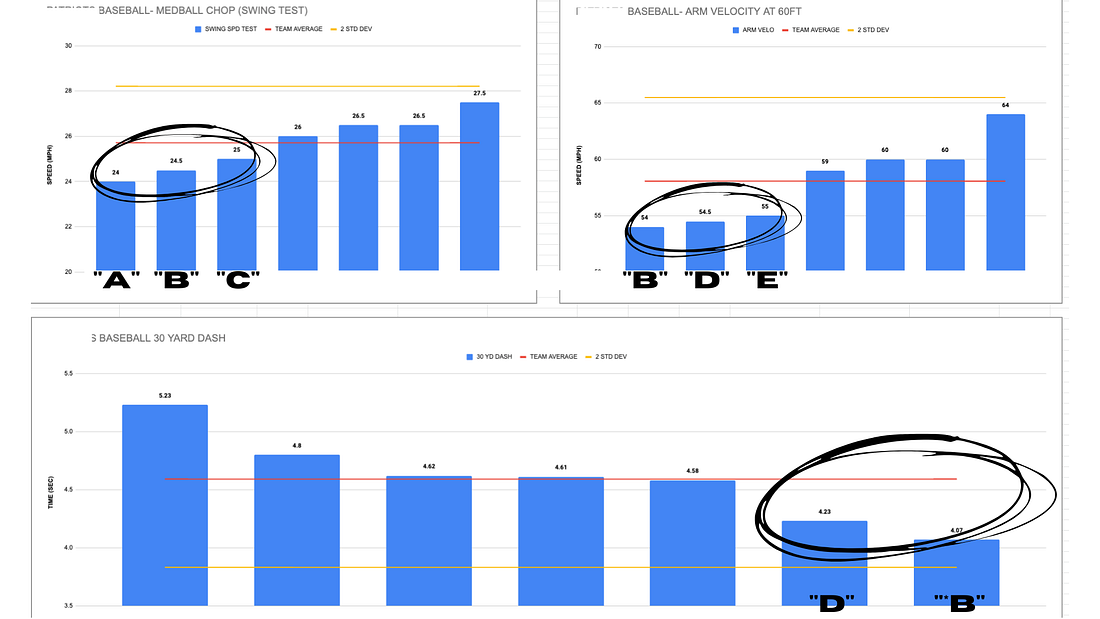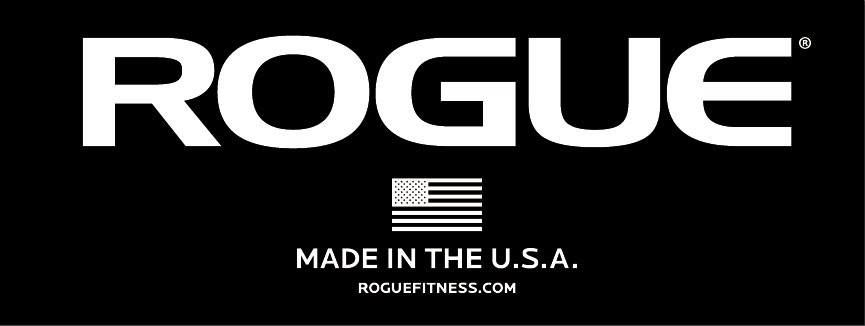The process of Reverse Engineering, Evaluating, and Critical Thinking Pt. 2 of 2
For individual needs, coaches should think about:
- Injury History
- Positions
- Team Averages
The first point is fairly obvious. If you have a healthy athlete with a healed injury, this may limit exercise selection, volume, or intensity, maybe indefinitely, to avoid re-injury; be careful not to allow careful programming scrutiny to devolve into coddling capable athletes. You may have movement screening capabilities or ready field assessments for testing relevant joint mobility, stability, and symmetry, in order to flag injuries before they happen. (Injury/mobility screening for reduction and return-to-play merits its own separate post).
To the second point – specific positions require specific demands. Such is the case, it is good for pitchers to throw the ball fast (more on this later concerning team and position averages). No doubt this is a desirable quality in any baseball player, but a pitcher especially. “Pop time”, that is, the time elapsed from the moment the pitch hits the catcher’s mitt to the time it arrives at the intended infielder’s mitt (typically picking off a runner at second base), is a valuable metric specific to only the catcher. Graft this thought process onto any sport; in football, offensive linemen have much different jobs than wide receivers, and their training should reflect this to the degree it is possible.
The third way to analyze team and individual needs are through team averages. For our U14 baseball team, our key performance indicators are swing speed, arm speed, and 30 yard dash time. You may choose to use metrics that are more or less correlated with the actual sporting action. Pick the best tests you can and work with the equipment and experience you have.
We could have just as easily used strength assessments for these athletes (an increase in strength with newbies raises all ships- speed, power, endurance). However, it is important to remember weight room and sprint volume/intensity are independent variables– they are used to drive the program’s dependent variables- acceleration, top-speed, jump height, upper and lower body power.
These, along with intangibles like confidence, decision making, reaction time, and of course, technique, have an effect on sporting outcomes – in baseball, batting average, strike-outs, stolen bases, etc.
Observe the data set below for our three metrics:
If you are competent with Excel or Google Sheets, and with basic statistics, you have a quick way to see who is below team average scores, and if possible, can apply specific strategies in the form of “add-ons” or nuanced program alterations for the below-average athletes to bring them in line with the rest of the team.
For our KPIs (representing our dependent variables), in order:
Medball Chop (Swing Test): To test swing speed, we used a pitch radar. Athletes used a small, 2lb medball and threw it as hard as possible into the wall as if swinging a bat; in this case, the medball is fairly close to the weight of the competition baseball bat these kids use, 33in/29 oz, or 1.81 lbs. Additionally, this test is more a measure of handle velocity, whereas a real baseball bat will travel much faster (rotational velocity increases the further away a point is from the axis of rotation- in this case, the hands. I.e. – the end of the bat in a baseball swing travels faster than the middle of the bat, travels faster than the hands). As is the case, “swing speed” is relatively low here, but I believe this test is reliable, in the statistical sense. If you have a wearable tracker for bats, go for it (time, space, equipment).
Athletes A, B, and C all fall below the team average on our calculated swing speed. Nobody on the team is above-average by our parameters (2 std. deviations).
Arm Velocity: (Radar + Baseball, warm-up the arm without exhausting the throwing motion and then let it rip. Simple).
Athletes B and D are both Outfielders with the weakest arms. Greater arm velocity for an outfielder means more options in a reactive, game situation. Hit the cut-off man or throw it on a rope from center to third if you can get it there. Athlete E is a Pitcher. The consequences of having a slow arm and being a pitcher require no explanation.
30-yard dash: (90 feet from home to first base, easy test option; we use an ArenaGear laser timing system to measure, but you can hand time). There are two athletes with below average sprint times, both outfielders. It is interesting to note that two athletes with the slowest arms are also the fastest on the team. When it comes to getting under a ball or making a diving catch, not to mention beating out a throw or stealing a base, these two are gifted in this category, athlete B to the tune of nearly 2 standard deviations.
Summary:
Understanding the needs of the sport we are training allows us to reverse-engineer towards a solid strength and conditioning program. Determine KPIs for competition success, and assess the best way to improve those indicators based on your specific teams’ and individual needs.
Within the context of KPIs, and within your allotted time, space, and equipment, draft your strength and conditioning program.
Assess the efficacy of your training program at appropriate time-specific intervals by testing, re-testing, and recording the results (you must record to develop an eye for the data trend, else you are relying on pure intuition).
With a very simple graph, you get a visual for improvement, and can objectively say to your team, and to parents, whether or not their athlete is more prepared to play their sport than when they started training for it.






